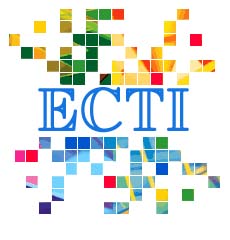Exploring the Optimum Buffer Size of an Emerging Stream Cipher Engine
Main Article Content
Abstract
One of crucial points for further improving ubiquitous network is to enhance temporary security without relying on permanent network infrastructure. Since a practical solution to provide such ubiquitous security is a safety aware, high-performed single chip processor, a multimedia stream cipher engine has been exploited. In order to keep security, usability, speed, and power consciousness, the stream cipher engine takes a compact multicore architecture. Each core implements a double cipher scheme that covers RAC (random addressing cryptography) and data sealing. The double cipher is microarchitecture based, software-transparent hardware cryptography that offers the protection of the whole data with negligible hardware cost and moderate performance overhead. Stream cipher engine chips have been developed by using 0.18-m standard cell CMOS technologies. Through the rough evaluation of those chips, it has emerged that streaming buffer size is crucial for prospective specifications. In order to achieve sophisticated design strategy, this paper evaluates in detail the buffer size dependency of power dissipation, clock speed, running time, and throughput, focusing on the latest version of the stream cipher engine chip. From the tradeoff between these specificative factors, the guideline of optimum buffer size is made clear in view of safety and performance for ubiquitous computing.
Article Details
This journal provides immediate open access to its content on the principle that making research freely available to the public supports a greater global exchange of knowledge.
- Creative Commons Copyright License
The journal allows readers to download and share all published articles as long as they properly cite such articles; however, they cannot change them or use them commercially. This is classified as CC BY-NC-ND for the creative commons license.
- Retention of Copyright and Publishing Rights
The journal allows the authors of the published articles to hold copyrights and publishing rights without restrictions.
References
[2] A. Jerraya, H. Tenhunen, and W. Wolf, "Multipro-cessor Systems-on-Chips,h Computer Magazine, Vol. 38, No. 7, 2005.
[3] M. Fukase and T. Sato, "Power Conscious Endeavor in Processors to Speed Up Random Sampling," Proc. of SCI 2003, Vol. V, pp. 111-116, Jul. 2003.
[4] M. Fukase, H. Takeda, R. Tenma, K. Noda, Y. Sato, R. Sato, and T. Sato, "Development of a Multimedia Stream Cipher Engine,h Proc. of ISPACS 2006, pp. 562-565, Dec. 2006.
[5] M. Fukase and T. Sato, "A Stream Cipher Engine for Ad-hoc Security,h Proc. of CISf2007, pp. 902-906, Dec. 2007.
[6] M. Fukase, A. Fukase, Y. Sato, and T.@Sato, "Cryptographic System by a Random Addressing-Accelerated Multimedia Mobile Processor,h Proc. of SCI 2004, Vol. II, pp. 174-179, Jul. 2004.
[7] M. Fukase, K. Noda, and T. Sato, "Emerging Hardware Cryptography and VLSI Implementation,h Proc. of ISPACS 2008, pp. 445-448, Feb. 2009.
[8] M. Fukase, Y. Ohsumi, and T. Sato, "Exploring the Optimum Buffer Size of an Emerging Stream Cipher Engine,h Proc. of ECTI-CON 2009, pp. 607-610, May 2009.

